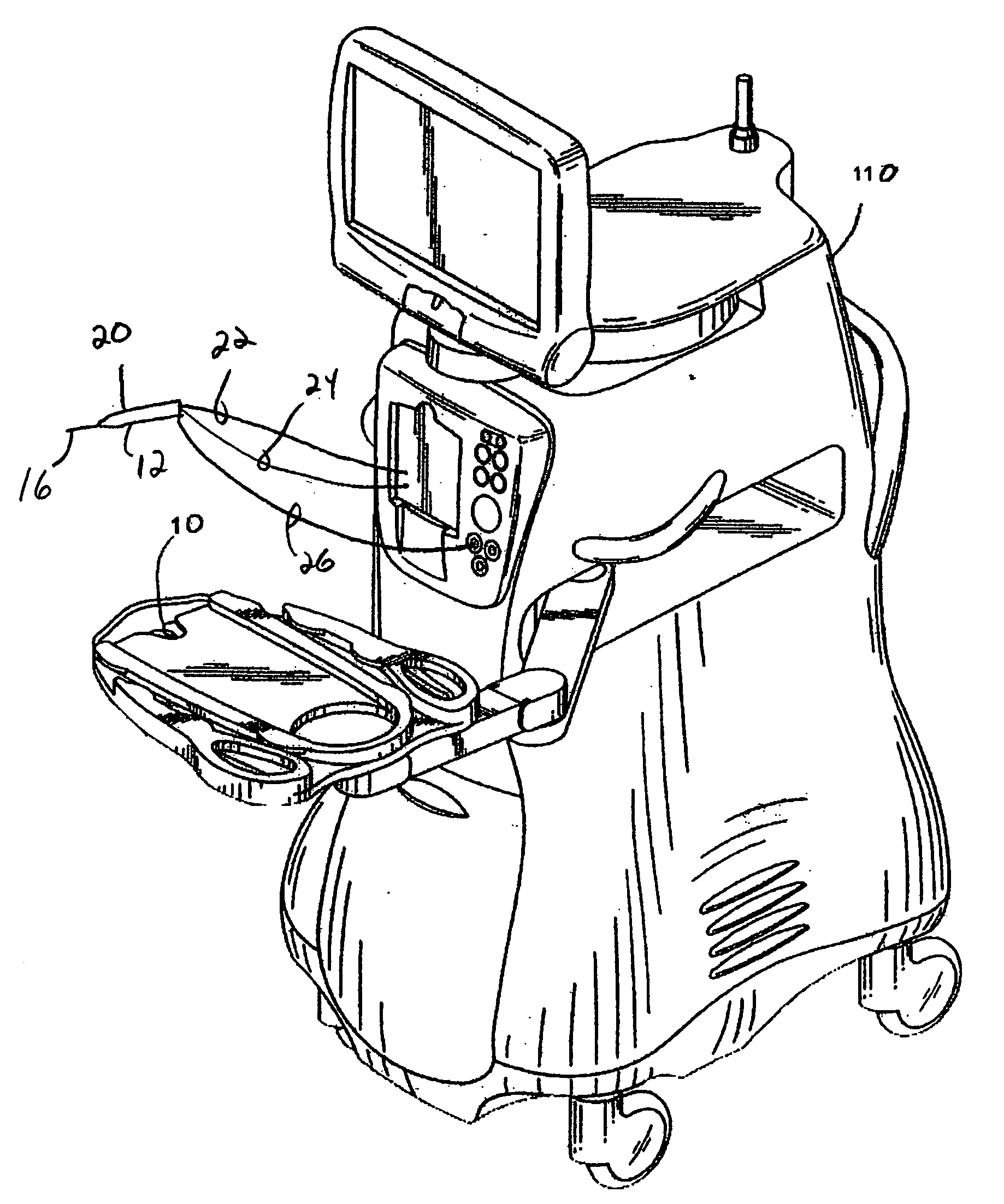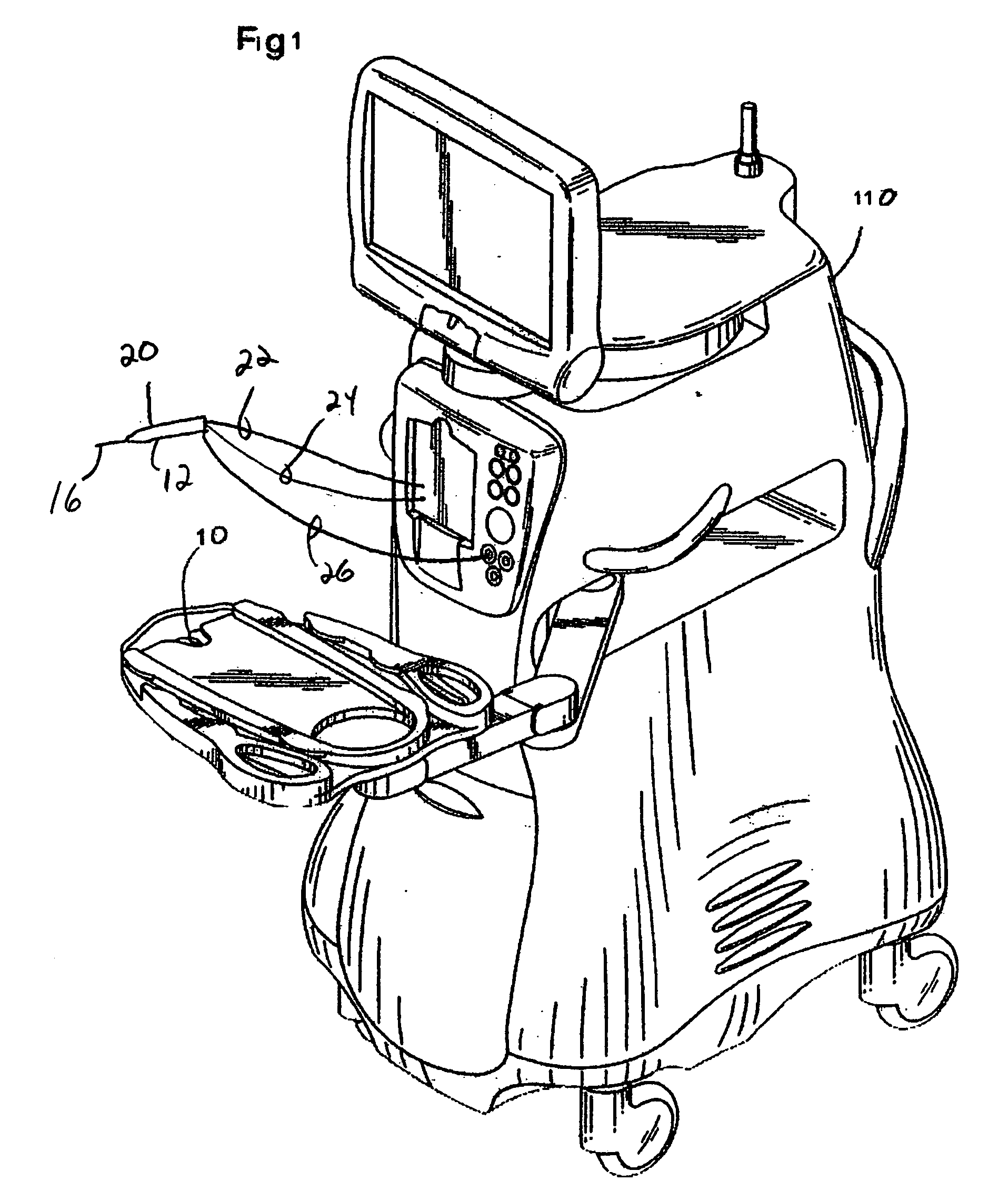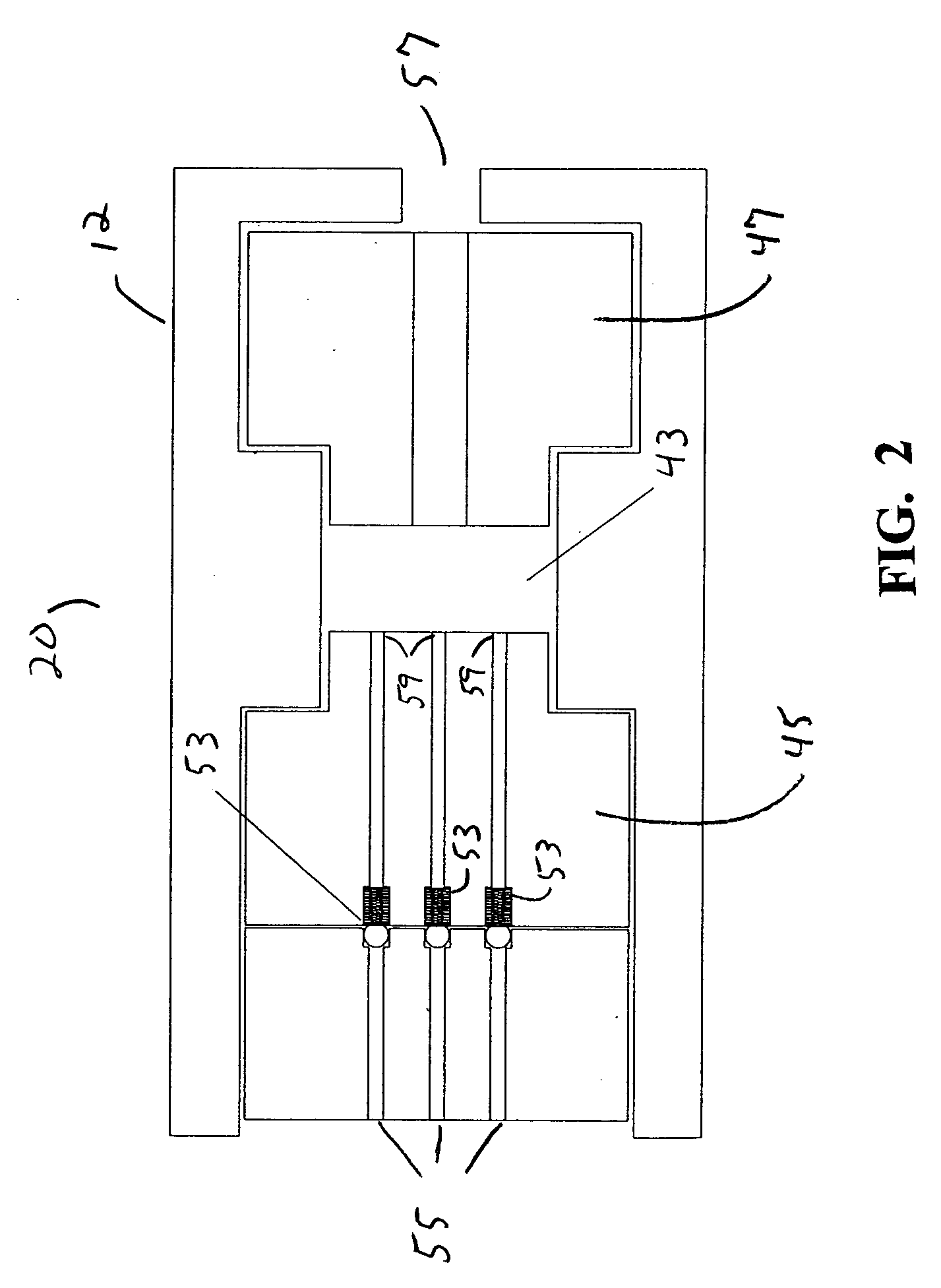Pumping chamber for a liquefaction handpiece
- Summary
- Abstract
- Description
- Claims
- Application Information
AI Technical Summary
Benefits of technology
Problems solved by technology
Method used
Image
Examples
Embodiment Construction
[0018] As best seen in FIG. 1, commercially available surgical systems generally include surgical console 110 having attached mayo tray 10 and handpiece 20 attached to console 110 by aspiration tubing 22, irrigation tubing 24 and power cable 26. Power to handpiece 20 as well as flows of irrigation and aspiration fluids are controlled by console 110, which contains appropriate hardware and software, such as power supplies, pumps, pressure sensors and valves, all of which are well-known in the art.
[0019] Handpiece 20 of the present invention generally includes handpiece body 12 and operative tip 16. Contained within body 12, as best seen in FIG. 2, are proximal electrode 45 and distal electrode 47 which define pumping reservoir 43. Electrical power is supplied to electrodes 45 and 47 by insulated wires, not shown. In use, surgical fluid (e.g. saline irrigating solution) enters reservoir 43 through ports 55, check valves 53 and inlets 59, check valves 53 being well-known in the art. E...
PUM
 Login to View More
Login to View More Abstract
Description
Claims
Application Information
 Login to View More
Login to View More - R&D
- Intellectual Property
- Life Sciences
- Materials
- Tech Scout
- Unparalleled Data Quality
- Higher Quality Content
- 60% Fewer Hallucinations
Browse by: Latest US Patents, China's latest patents, Technical Efficacy Thesaurus, Application Domain, Technology Topic, Popular Technical Reports.
© 2025 PatSnap. All rights reserved.Legal|Privacy policy|Modern Slavery Act Transparency Statement|Sitemap|About US| Contact US: help@patsnap.com



